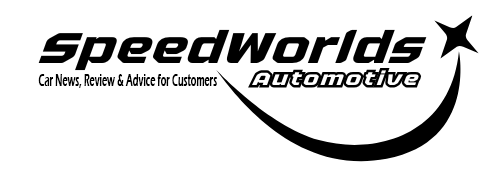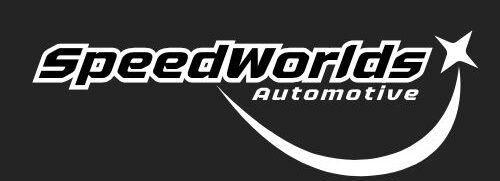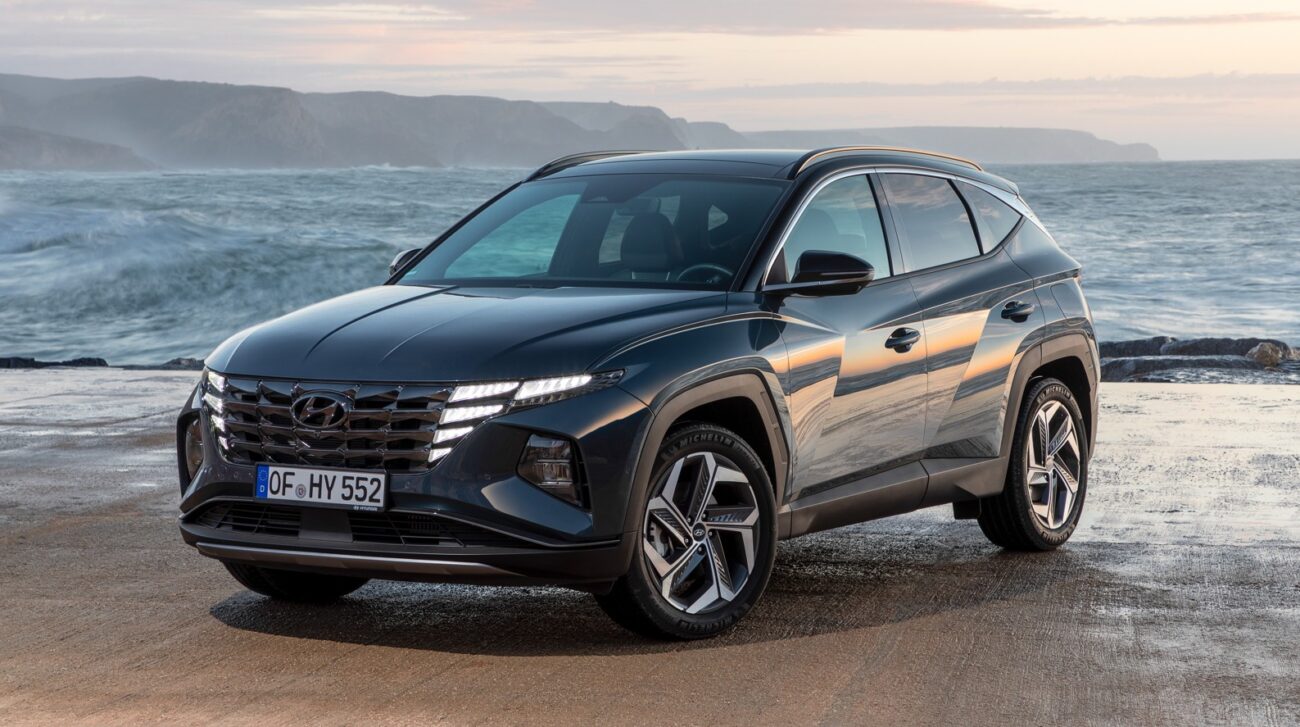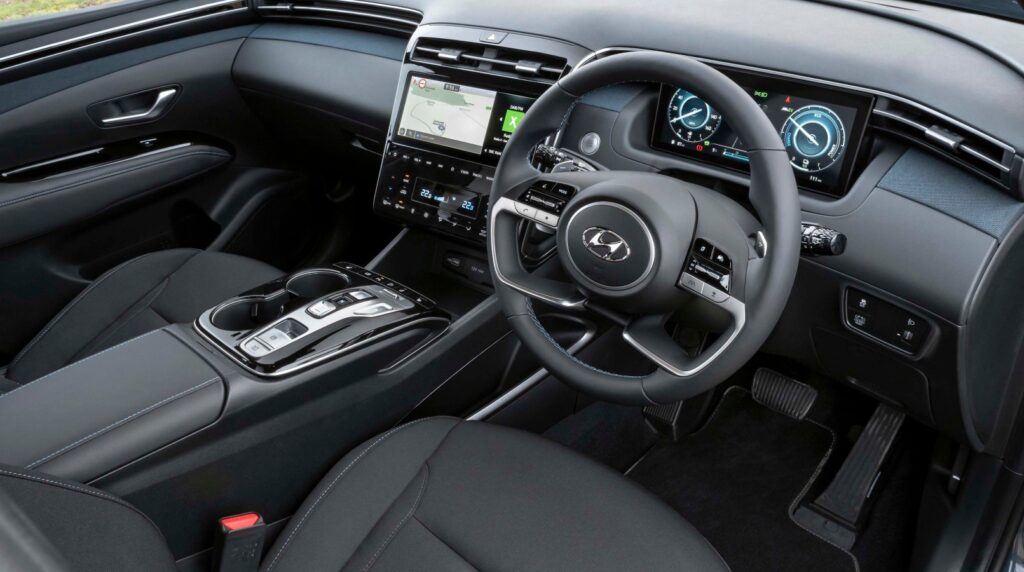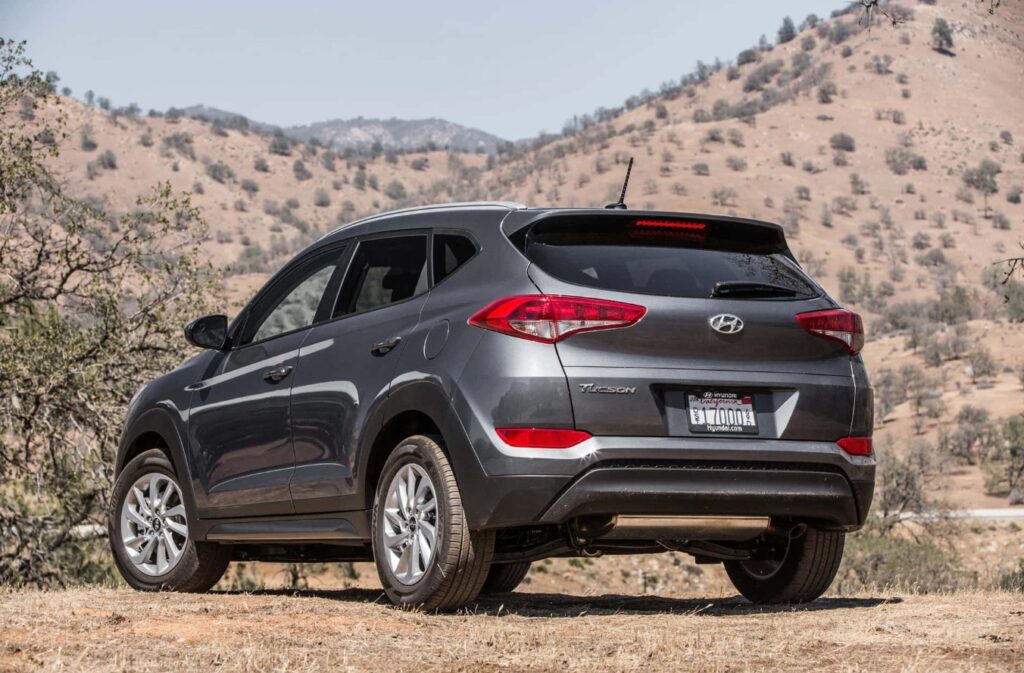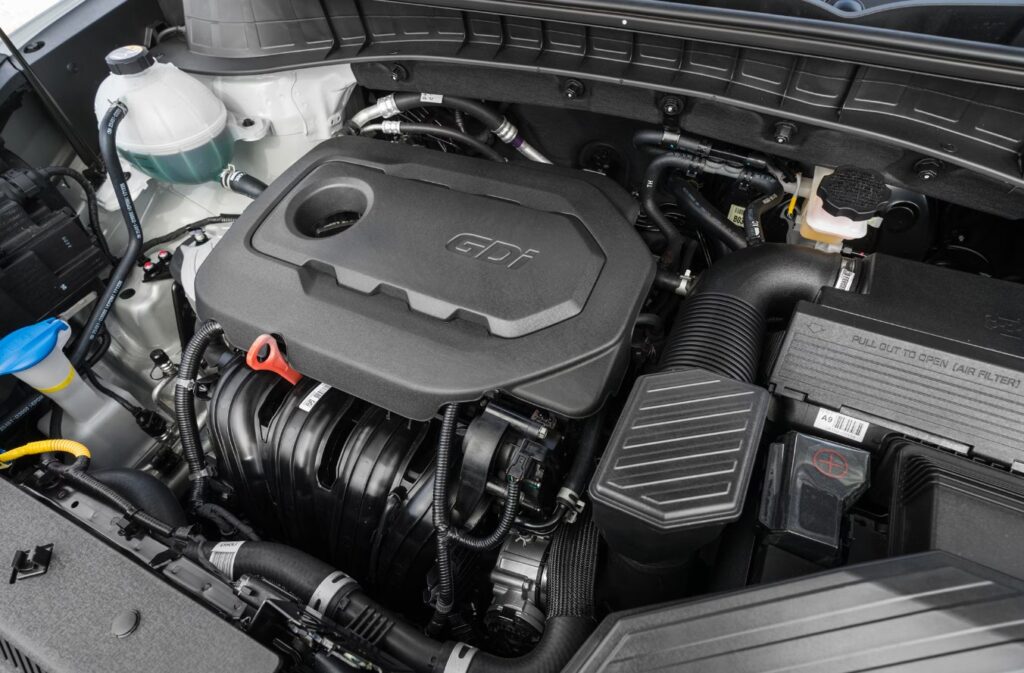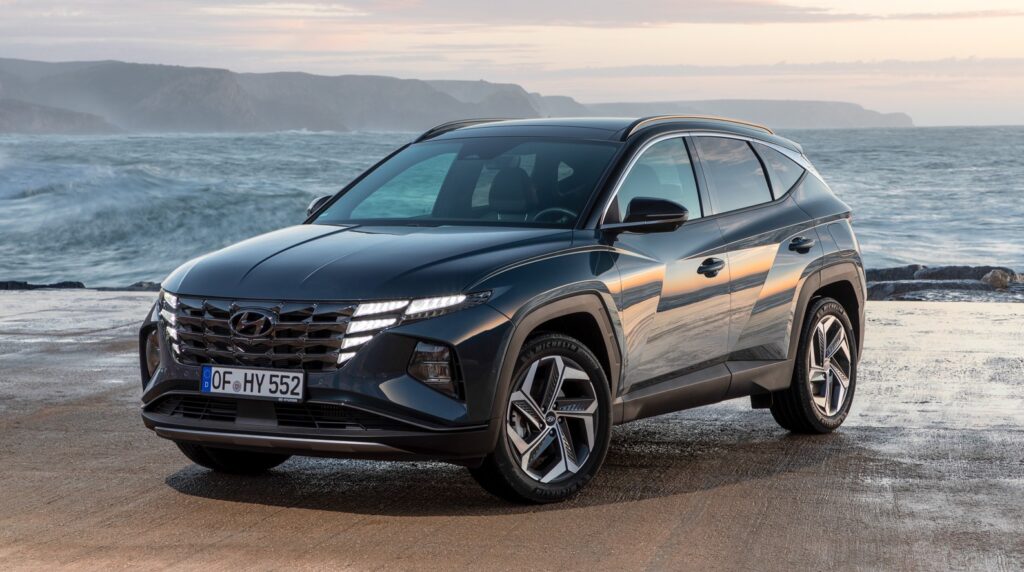2026 Hyundai Tucson Specs, Price, Interior – Let’s go down to the point: the previous Tucson was a vehicle that primarily promoted itself as being practical, reasonably priced, and family-friendly. Its noticeable lack of flair was somewhat compensated for by its decent equipment levels.
This fourth-generation Hyundai mid-size SUV is a distinctive vehicle, nevertheless, with the goal of becoming a luxury choice for families that value style and design in addition to the more utilitarian qualities of everyday utility and overall load capacity.
Due of the intense rivalry in this industry, several of Tucson’s rivals have created unique selling propositions (USPs) to help them differentiate themselves from the competition. Even if the Ford Kuga is popular and makes family SUV life more enjoyable, the Volkswagen Tiguan is a well-known and flawless vehicle. The Skoda Karoq and SEAT Ateca provide unique takes on the Volkswagen Group car, despite Peugeot’s 3008’s luxurious interior and classic Gallic design. 2026 Hyundai Tucson Specs
2026 Hyundai Tucson Redesign and Update Plan
Exterior & Interior
The 2026 Hyundai Tucson generation was clearly different from its more conventional predecessor in order to stand out in the fiercely competitive medium SUV market. The designers of the new Tucson made the right decision in maintaining its striking appearance. To complement the car’s massive SUV look, the only obvious changes are a bigger lower bumper piece with a fake skid plate and a reworked front grille. Everything seems a lot more put together now that the Hyundai symbol is concealed behind the glass of the rear window.
The Tucson is another illustration of how automakers are improving onboard technology and interior design. Even while we had previously appreciated the opulent ambiance of the cabin, the facelift drastically altered the design to more closely reflect the interiors of the smaller Hyundai Kona and electric Hyundai Ioniq 5. The pre-facelift car’s touch-sensitive controls have been swapped out for a central infotainment screen and digital driver’s instrument cluster that seamlessly integrate with the dashboard. It is considerably easier to use now because the main panel has several physically accessible shortcut buttons.
The temperature in each front zone is controlled by two massive knobs on the climate controls, which are situated underneath them. These knobs are much easier to find while driving than the touch-sensitive controls of the leaving Tucson. The touch-sensitive simulated buttons on the screen between the two dials shouldn’t need to be used too much. The biggest disadvantage is that you will have to extend your arm farther to reach the far corner of the main screen due to its increased distance.
The updated Tucson maintains the robust feel of the original model, even with the strange strip of fabric that runs the length of the dash to break up the expanse of soft-touch plastic. Nonetheless, we’ve seen that most trim levels continue to employ a muted color palette.
When you get behind the wheel, you’re greeted by a brilliant 10.25-inch digital instrument cluster and a limited amount of conventional buttons and switches. Cars with manual transmissions have a unique center console configuration, whereas automated models, such as the Kona and Ioniq 5 mentioned above, have a gear selector on the right, immediately behind the steering wheel, to free up more storage space.
Among the many standard features of the base Advance trim are 17-inch alloy wheels, dual-zone climate control, cruise control, a rearview camera, front and rear parking sensors, heated and folding door mirrors, Bluetooth, wireless smartphone connectivity with a wireless charging pad, and DAB audio setup.
The Premium upgrade includes an improved Krell audio system, an electronic tailgate, heated front and rear seats, adaptive cruise control for hybrid and automatic vehicles, and an autonomous emergency braking system that prevents you from turning into oncoming traffic at a junction.
The sporty external and interior elements of the N Line and N Line S models are still present in the fourth-generation Tucson. The normal N Line is nearly identical to the Advance, save for 19-inch alloy wheels, a larger front bumper with intake, and a more aggressive rear diffuser with twin-exit exhausts. Buyers also receive a black headliner, metal pedals, leather and suede sports seats for the inside, a rear spoiler, and a revised radiator grille.
The equipment list is increased to include a 360-degree camera system, LED matrix headlights, ventilated front seats, a heated steering wheel, three-zone temperature control, an electric panoramic sunroof, and a Blind Spot Collision Warning system, even though the N Line S level maintains the same design changes.
For those who want the technology included in the N Line S but do not want a sporty-looking Tucson, the top Ultimate trim is a must. It contains memory settings for the driver’s seat and the ability to alter the color of the seats.
The Tucson’s infotainment system is excellent and easy to operate. Each model comes with two 10.25-inch displays that provide great visuals and quick loading times. Additionally, if you wish to link your smartphone, it includes an amazing built-in sat-nav system, Apple CarPlay, and Android Auto.
Even if it might not be as big as the Kia Sportage’s or have the same clarity or loading speed as the Google-powered arrangement on the Renault Austral, the center touchscreen is nonetheless simple to see. The main menu displays all of the key features in two rows of shortcut icons, and most of the sub-menus are rather well-designed.
Hyundai has made it easy to access the driver-assistance menu since it frequently feels like the car is always beeping at you while you’re driving. Instead of having to navigate through several touchscreen selections to find the right one, a shortcut button has been installed on the steering wheel. There is also a secret shortcut that requires briefly pushing the mute button to turn off the speed limitation alert system, which whistles when it detects that you are above the speed limit.
There is another 10.25-inch screen in front of the driver. Selecting the statistics is made easy by the buttons on the steering wheel, and the colors and graphics vary based on the driving style that is chosen. If you wish to listen to music in your car, you might want to choose the improved Krell audio available on the Premium, N Line S, and Ultimate trims. 2026 Hyundai Tucson Specs
2026 Hyundai Tucson Specs
Engine & Performance
The fourth-generation 2026 Hyundai Tucson, with its innovative design and state-of-the-art hybrid powertrain, is a fantastic illustration of the company’s lofty goals for its newest mid-size SUV.
The hybrid engine does a great job in cities and on highways. The engine becomes a touch thrashy when it’s working hard, so even if the six-speed automated transmission is anxious to shift up early, this isn’t a bad thing.
The Tucson is best utilized in Eco mode. The Tucson’s emphasis on comfort ultimately clashes with the Sport option, which modifies the throttle response and increases the electric motor’s assistance but also causes the car to rev higher and hold onto lower gears longer.
The hybrid model’s ability to lower engine power when the throttle is pushed at high speeds further improves refinement and efficiency. You might not even be aware that the technology is working since it accomplishes this so smoothly and effectively.
Hyundai has given the Tucson a decent level of agility in bends to help it retain control and balance on the occasionally fractured tarmac of UK roads. You probably wouldn’t pick the Tucson for a Sunday morning trip on rural roads, even with its stylish, cozy, point-to-point mobility.
Despite being the most powerful car in the fleet, the plug-in hybrid Tucson weighs over 200 kg more than its conventional gasoline or hybrid equivalents. The Tucson PHEV does a respectable job of smoothing out bumps, making them more heard than felt, and we found that the additional weight had no discernible effect on the vehicle’s performance. The Tucson’s nimble handling makes driving in cities effortless, but the Hyundai is quiet and stylish when traveling at highway speeds.
Thanks to a dual-clutch gearbox, the mild hybrid version cuts the time from 0 to 62 miles per hour to 9.4 seconds for the two-wheel drive model and 9.8 seconds for the four-wheel drive vehicle. The 1.6 TGDi gasoline-only car with 158 horsepower can accelerate from 0 to 62 kilometers per hour in a reasonable 9.9 seconds. Everyone’s maximum speed is 119 mph.
The full-hybrid technology increases the power output to 212 horsepower and reduces the 0-62 mph time to 8.2 seconds, even if the top speed for this kind is slightly lower at 116 mph. During testing, we were surprised by how noisy and uncomfortable the four-cylinder engine was at high rpm.
Despite being heavier, the plug-in hybrid offers higher power (249 bhp and 304 Nm). The two-wheel drive variant achieves a top speed of 116 mph in 8.2 seconds, while the four-wheel drive version takes 8.5 seconds to reach 62 mph. The Tucson PHEV’s electric motor may take the place of the 1.6-liter gasoline engine under the hood when needed, and you can quickly tap the foot to improve performance. However, it won’t prevail in a Top Trumps game. As so, it accelerates with a level of readiness that no other Tucson can equal.
2026 Hyundai Tucson Fuel Economy
Regardless of how well it drives, how comfy it is to sit in, or how much luggage it can take, the 2026 Hyundai Tucson won’t make it into client shortlists if running costs are too high. Thankfully, the Tucson has a large range of powertrain choices to suit all needs and price ranges, including gasoline, plug-in hybrid, full-hybrid, mild-hybrid, and pretty much anything else that isn’t an electric car.
The most economical car to buy is the Advance trim level, which features a 1.6 TGDi gasoline-only engine with 158 horsepower. It generates 154 g of CO2 per kilometer, has a six-speed manual transmission, and gets a respectable 41.5 mpg on the combined cycle.
When this engine is coupled with an automatic transmission, fuel efficiency rises to 44.8 mpg and emissions drop to 142 g/km (40.4 mpg and 158 g/km for the four-wheel drive model). Because it uses mild-hybrid technology, which lowers engine load and adds a tiny electric motor to aid in acceleration, the automatic is better than the manual. With similar equipment, a Volkswagen Tiguan is somewhat more efficient.
The 227bhp full-hybrid version, which can get up to 49.6 mpg and emit 129 g/km of CO2, greatly improves these figures. After more than 8,000 kilometers of driving our Tucson Hybrid long-term test car, we averaged 46.5 mpg. We were rather pleased with the result.
The Tucson Plug-in Hybrid is, of course, the most expensive (and efficient) vehicle. According to Hyundai, the Tucson PHEV may get up to 201.8 mpg and release 29 g/km of CO2. It should still be an affordable family SUV even if you don’t meet those numbers (remember to charge the battery as frequently as you can to save money on operating costs). Driving a business car is much more advantageous since it is subject to the 12 percent Benefit-in-Kind (BiK) tax level instead of the 35 or 30 percent bands that gasoline and full-hybrid cars are in.
The Tucson PHEV is the only hybrid vehicle that needs self-charging because the other vehicles use energy recovery from the engine or brakes to charge their batteries. The Tucson Plug-in Hybrid’s 13.8kWh lithium-ion battery allows it to travel up to 38 miles on electricity alone. Even if the number we saw during our own tests was a little lower, you should have no issue going more than 30 miles without using any gasoline if the car is fully charged. That’s great, but the newer VW Tiguan eHybrid can go up to 77 miles between charges thanks to its larger 25.7kWh (19.7kWh usable) battery.
If you use a wallbox or public charging station with a high enough speed, the Tucson’s 7.2kW on-board charger can fully recharge the extremely big battery in less than two hours, while lacking the Tiguan eHybrid’s rapid charging capabilities.
2026 Hyundai Tucson Safety Features
Given that its electric motor is frequently seen in other Hyundai models, the 2026 Hyundai Tucson is anticipated to be a dependable family SUV. The fourth-generation model was left off of our list of the best cars to own in the 2024 Driver Power customer satisfaction survey. Its twin, the Mk5 Kia Sportage, finished an incredible 11th out of 50 vehicles.
Hyundai fell to 17th out of 32 in the 2023 Best Auto Manufacturer rankings, down from 11th in 2022.
Although the Tucson’s standard safety package is excellent, in order to utilize all of the available features, you will need to upgrade to the N-Line S or Ultimate trim. These two features—Rear Cross Traffic Collision Avoidance, Forward Collision Avoidance Assist, and Blind Spot Collision Warning—help you steer clear of potential obstructions when reversing out of a driveway or parking spot.
The fourth-generation Tucson received a flawless five-star certification with Euro NCAP when they examined the family SUV in 2022. It received ratings of 87 percent for child occupant protection and 86 percent for adult occupant safety, despite the driver’s chest being very slightly covered.
2026 Hyundai Tucson Release Date & Price
Among the numerous options, the Japanese three models—the Honda CR-V, Mazda CX-5, and Toyota RAV4—stand out. Next up are the Renault Austral, the Vauxhall Grandland, the Kia Sportage, the Tucson’s sister, and the former Nissan Qashqai.
We’ve tested the Tucson against several rivals over the years, and each time the Hyundai won, it received the winner’s medal. We believe Hyundai is dedicated to both competing with the leading mainstream manufacturers and outperforming more expensive ones like Audi and BMW.
With beginning prices of around £32,000, the Tucson range undercuts the Kuga and Tiguan. However, even the “base” model will have several choices because Hyundai doesn’t truly provide a standard entry-level trim.
The trim hierarchy is very straightforward, starting with Advance and moving up to Premium, the sportier-looking N Line and N Line S, and eventually Ultimate. All versions are equipped with a 10.25-inch infotainment display with sat-nav, Android Auto, and Apple CarPlay compatibility, a rear camera, dual-zone air conditioning, and cruise control. 2026 Hyundai Tucson Specs
Conclusion
One strong candidate is the Hyundai Tucson 2026. In the crowded mid-size SUV market, the Tucson stands out thanks to its striking design, intuitive onboard technology, and opulent interior that appeals to both the mind and the emotions. The range has a trunk large enough to compete with estate vehicles, one of the class’s roomiest interiors, a high level of standard equipment, and efficiency-enhancing hybrid technology.
Despite the Tucson’s recent little price hike, we think Hyundai has done an excellent job creating a family car that is both fashionable and useful. The car was chosen as our 2021, 2022, 2023, and 2024 Mid-size SUV of the Year.
Note: This article post’s information is based on pre-release content that was available at the time it was published. You should contact your local dealership or consult official sources for the most recent information.

